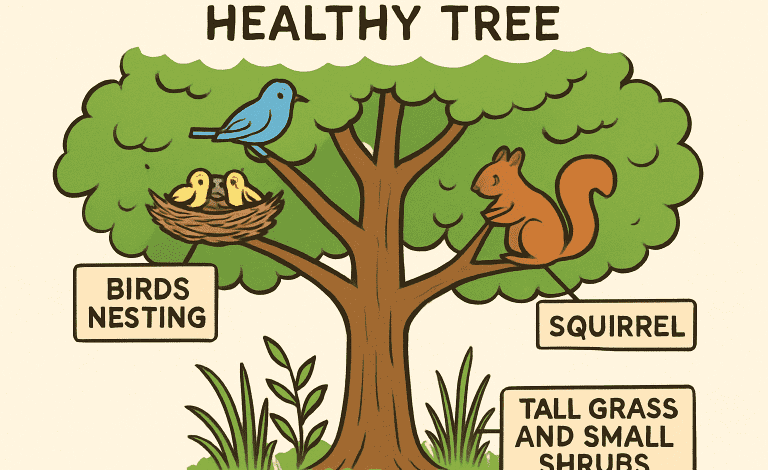How to Maintain Trees Without Harming Wildlife Habitats

Healthy trees contribute much more than beauty and shade—they are vital habitats for countless wildlife species. When it comes to tree care, mindful practices can help safeguard birds, mammals, and insects living in or around your trees. Responsible tree maintenance is crucial for the longevity of your landscape and the preservation of local biodiversity. If you’re interested in professional and environmentally conscious tree care, consider services such as tree pruning Richardson to ensure expert handling of your trees with wildlife in mind. Understanding how to maintain trees while protecting the creatures that rely on them empowers you to support nature and enjoy a healthier landscape for years to come.
Understanding the Importance of Trees for Wildlife
Trees provide essential resources for wildlife. Their branches, leaves, bark, and cavities form natural shelters or safe nesting sites. For example, dead or decomposing trees, known as “snags,” offer nesting locations to many bird species, such as woodpeckers and small owls. Deadwood is also a critical habitat for insects, attracting insectivorous birds. Even the leafy canopy and understory beneath trees offer refuge and food for pollinators and mammals. By maintaining trees thoughtfully, you help support a broad and interconnected ecosystem.
Timing Your Tree Maintenance Activities
One of the most effective strategies for wildlife-friendly tree care is to schedule maintenance during periods of lower animal activity. Many birds, for instance, nest from early spring through late summer. Performing tasks like pruning or removal outside major nesting seasons can help reduce the risk of interrupting breeding or harming young. Plan your major tree work for late fall or winter, when many animals are less vulnerable.
Conducting Pre-Maintenance Wildlife Assessments
Before you begin any tree maintenance, carefully survey active wildlife habitats. Check for visible nests, burrows, dens, or feeding evidence in and around the tree. Birds, squirrels, and even bats may use branches, cavities, or hollows as homes. If you discover signs of occupancy—such as nests with eggs, fledglings, or adult animals—consider postponing work or contacting a wildlife professional to guide your next steps. Preserving these habitats when possible greatly benefits local species.
Utilizing Proper Equipment and Safety Measures
Using suitable, well-maintained equipment helps make tree work both efficient and safer for you and wildlife. Prioritize hand pruners for small limbs, loppers for medium limbs, and sturdy pruning saws for larger cuts. Wear appropriate safety gear such as gloves, goggles, and helmets. Extra care prevents accidents that could disturb animals or destroy their habitats. Avoid harsh chemicals and heavy machinery when possible, as these are more disruptive to sensitive wildlife in the area.
Engaging Professional Arborists with Wildlife Expertise
For complex or large-scale tree work, it’s wise to hire certified arborists with experience in wildlife conservation. Professionals assess the health of your trees, identify habitats, and make expert recommendations that align with ecological best practices. Their trained eyes can spot signs of wildlife you might miss and provide solutions to preserve tree and animal well-being.
Creating and Preserving Wildlife Habitats
Enhancing your landscape to support nature can go a long way beyond just maintenance:
- Plant Native Species: Opt for native trees and shrubs adapted to your region, as these offer optimal food and cover for local wildlife.
- Maintain Understory Vegetation: Allow native grasses, groundcovers, and shrubs to thrive beneath trees, providing additional habitat layers.
- Install Nesting Boxes: If natural cavities are limited, consider birdhouses and bat boxes to offer safe alternatives for wildlife.
These proactive steps help restore or improve habitats in your yard or community.
Monitoring and Adapting Maintenance Practices
Regularly monitor your trees and landscape to see how maintenance impacts wildlife. Document what you observe—increased bird activity, new nests, or a lack of animal presence. Adjust your approach accordingly if you notice negative effects, such as fewer animals or damaged habitats. Stay informed by learning from local wildlife resources, and keep striving for improvement with every season.
Achieving harmony between tree health and wildlife conservation takes small, thoughtful changes. When you integrate these strategies, you nurture stronger and more resilient trees and help safeguard the wild inhabitants who share your environment. Careful stewardship today leaves lasting benefits for ecosystems and communities alike.

